Small Details with a Big Impact: Our Top Interior Trim Ideas for Your Home
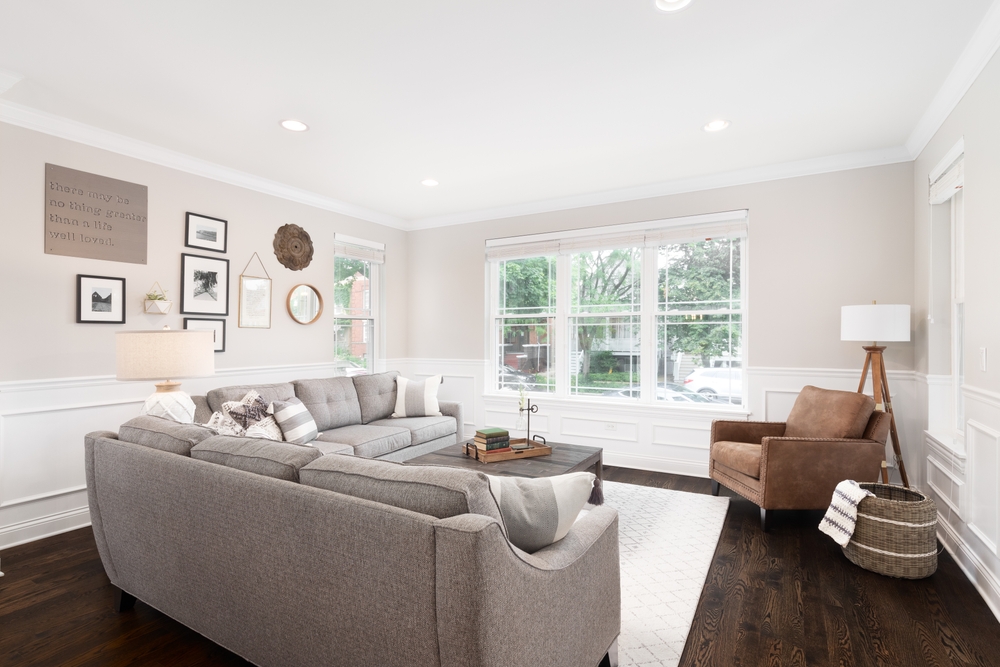
Interior trim might seem like a small detail in your home design, but these finishing touches can make a huge difference in elevating the overall aesthetic and functionality of your space. Aside from defining architectural features and adding personality to your space, investing in the right trim also provides durability—withstanding normal wear and tear throughout every room. With so many options available, the Standard Supply & Lumber experts are here to help with some specific interior trim ideas to transform your home.
Interior Trim Ideas to Inspire Your Home’s Look
There are so many ways to use trim—whether on your baseboards, at the intersection of your ceiling and walls, on your walls, and even on your staircases. Let’s walk through some ideas.
#1. Create a Timeless Staircase
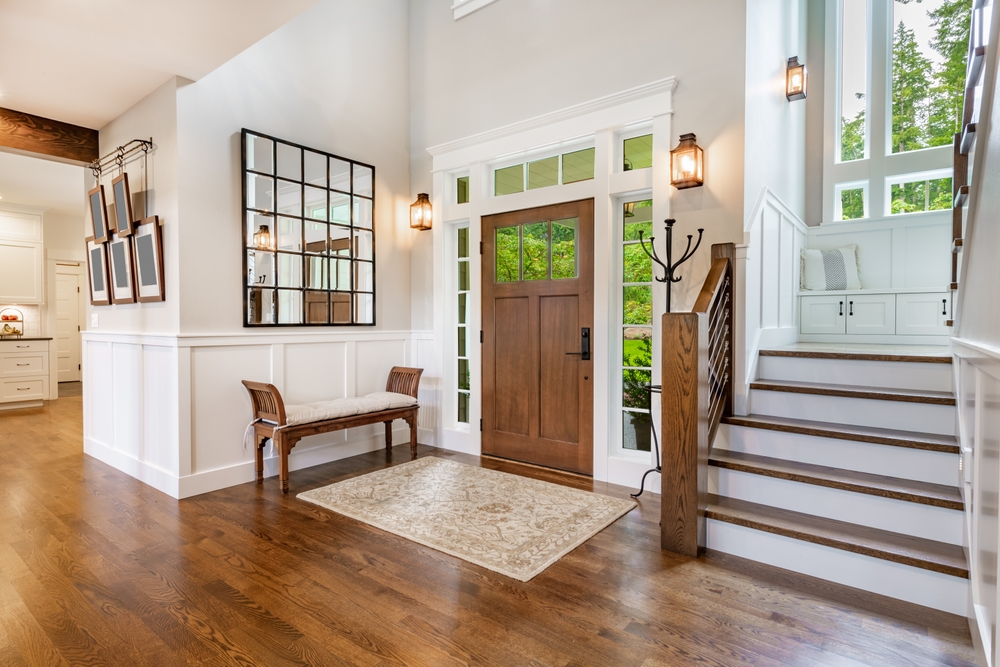
A staircase often serves as a focal point in a home, so why not make it a standout feature? Adding intricate trim details like balustrades with decorative molding or paneling underneath the stairs can take your staircase from ordinary to extraordinary. If you prefer a minimalist approach, a simple baseboard or a streamlined handrail with subtle trim accents can create a clean, timeless aesthetic. Pair your interior trim designs with matching stair treads for a cohesive look.
#2. Add Warmth with Pine Trim
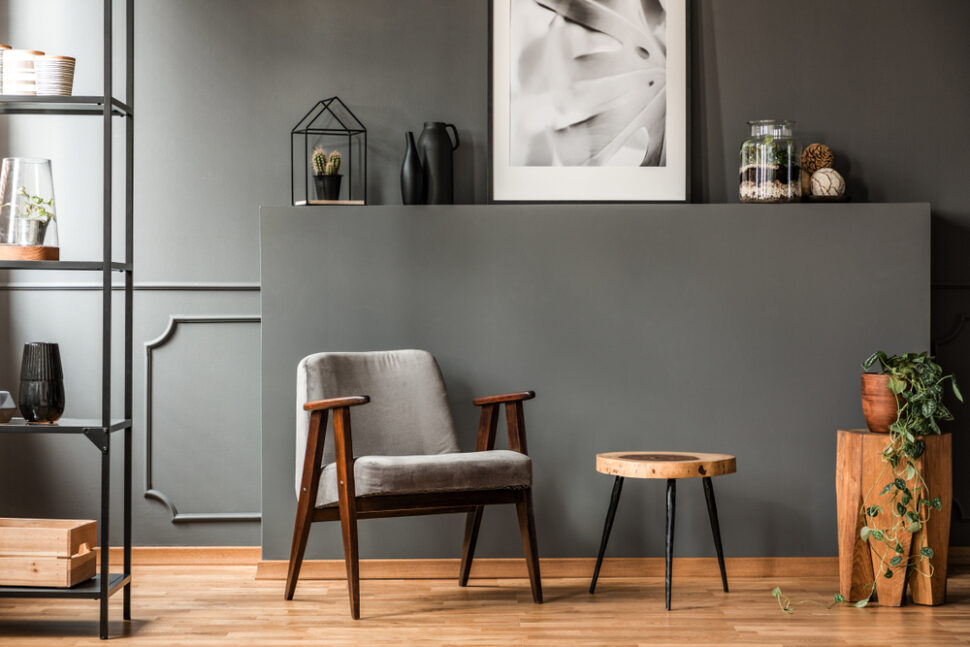
Pine trim’s natural grain and warm tones bring depth and character to any room, making it perfect for cozy, rustic, or farmhouse-inspired designs. It’s particularly effective in spaces like kitchens, dens, or entryways, where a welcoming atmosphere is key. Homeowners can also paint pine trim by sanding it to remove any roughness, applying a primer to prevent any knots from bleeding through, and then painting with a high-quality enamel paint for a smooth, durable finish. Proper preparation and using multiple light coats will ensure professional-looking results.
#3. Achieve Modern Appeal with Poplar Trim
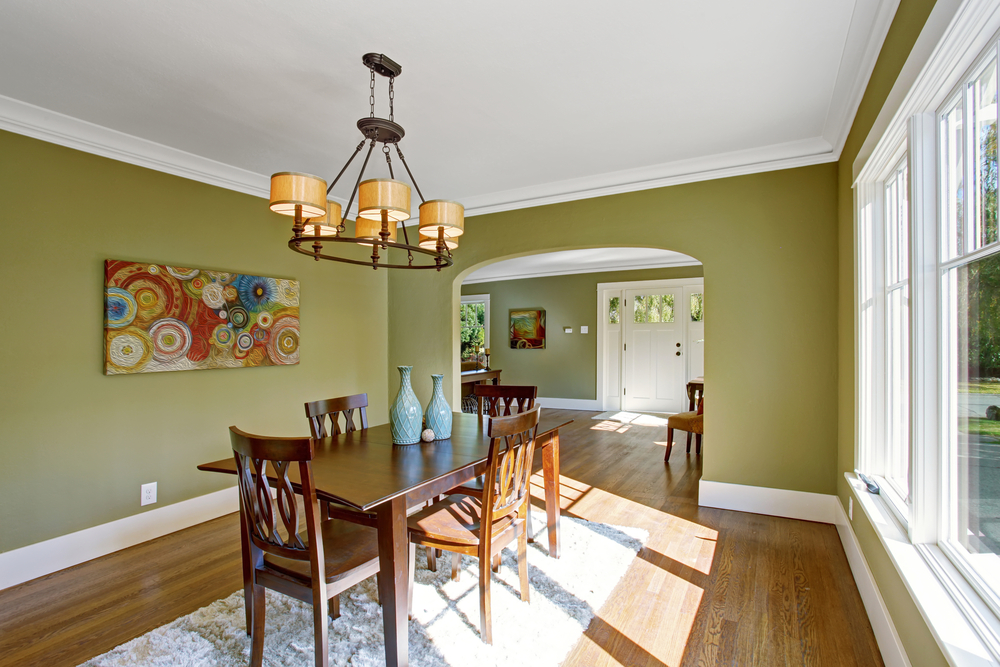
Poplar trim is one of the most common interior trim designs chosen by homeowners—and specifically those seeking a contemporary vibe. Its smooth texture and fine grain make it easy to work with, whether you’re painting it to match your walls or staining it for a natural finish. Poplar trim is versatile enough to use throughout your home. Incorporate it into baseboards, door frames, or crown molding to create a modern and seamless look. Pair it with bold wall colors or monochromatic palettes for an ultra-sleek aesthetic.
#4. Define Spaces with Chair Rail Trim
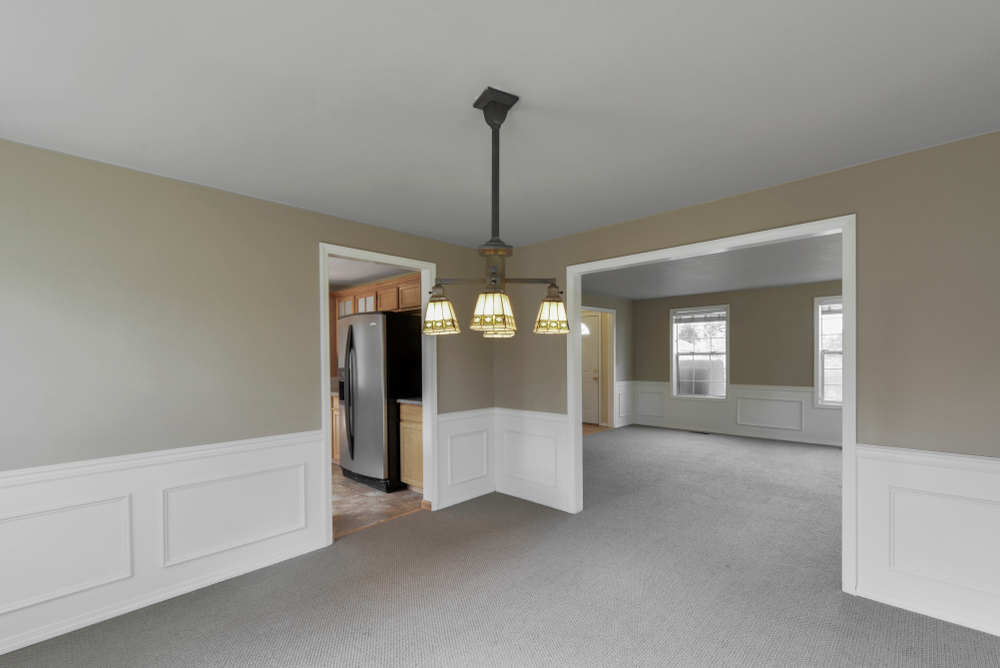
Chair rail trim is a classic way to divide and decorate a room. It provides a perfect transition between two wall colors or finishes, such as paint on the top half and wallpaper or wainscoting on the bottom half. In dining rooms, it can protect walls from chair scuffs while adding elegance. In children’s rooms, it can serve as a visual break for creative design choices like murals or contrasting shades. Experiment with different heights for your chair rail trim to suit the scale of your room. Typically, it’s installed at one-third the height of the wall, but taller ceilings may require a higher placement.
#5. Tie It All Together with Painted Trim
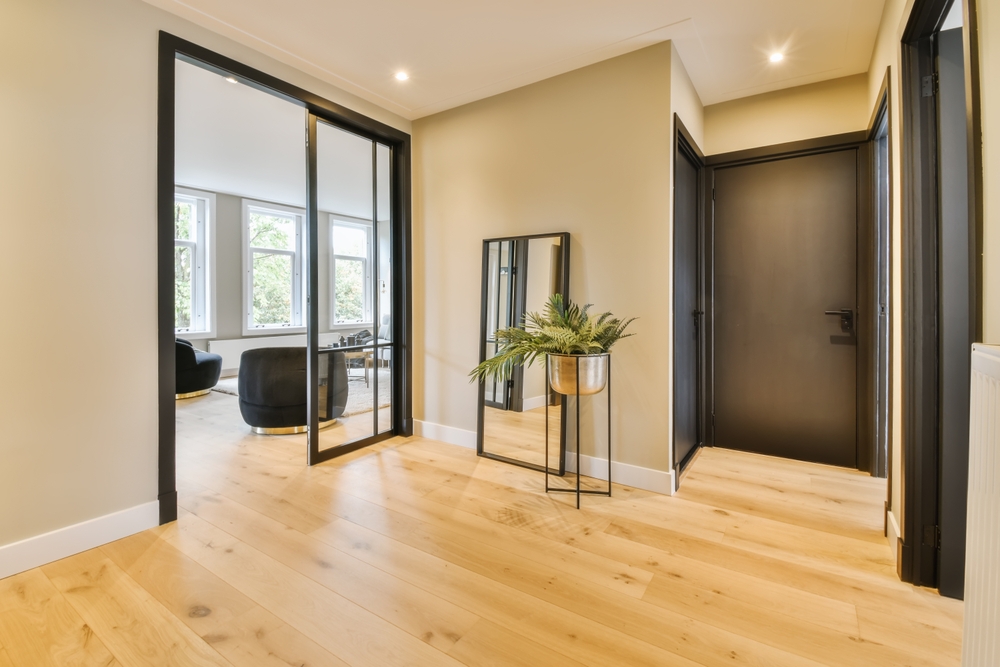
Ready to take interior trim designs into your own hands? Painted trim is a simple yet effective way to achieve a polished, unified look throughout your home. White trim is a classic choice that complements virtually any color palette, while dark shades like navy or black can add drama and sophistication. For a unique twist, try painting your trim a bold color that contrasts with your walls—such as a rich emerald green against a soft beige. This approach works beautifully in accent spaces like libraries, powder rooms, or home offices.
#6. Embrace Sophistication with Coffered Ceilings
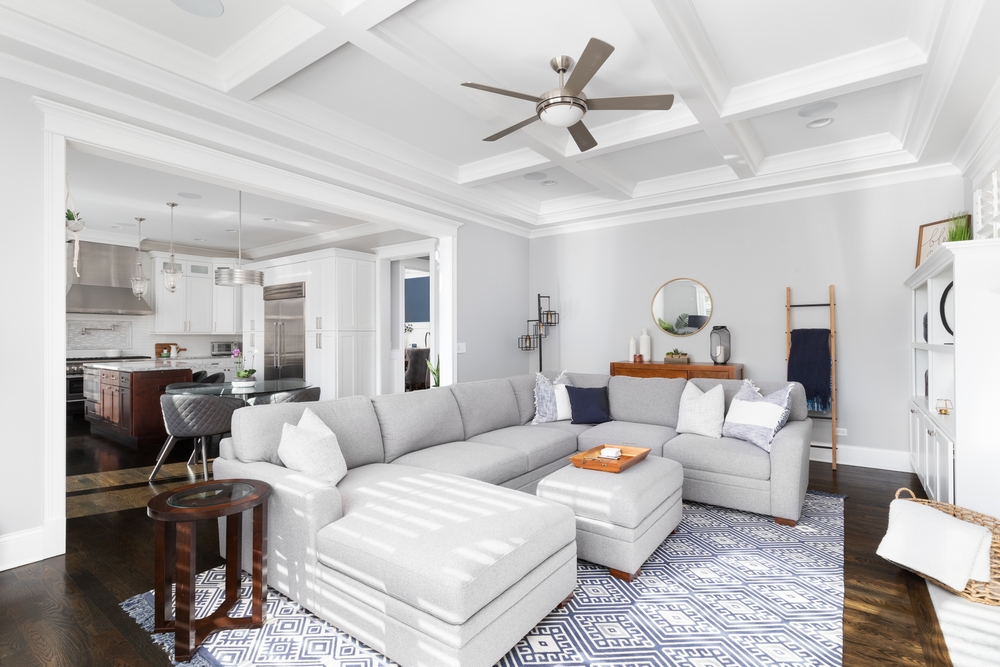
Coffered ceilings are a timeless design element that can dramatically enhance the architectural appeal of a room. Created by combining beams and trim to form a grid-like pattern on the ceiling, they add depth, texture, and a touch of luxury. Coffered ceilings are particularly effective in larger spaces with high ceilings, such as living rooms, dining rooms, or home libraries. The grid can be customized to fit any aesthetic—from a traditional square design with detailed molding for a classic feel to a geometric or asymmetrical pattern for a more modern twist.
#7. Give the Illusion of More Light
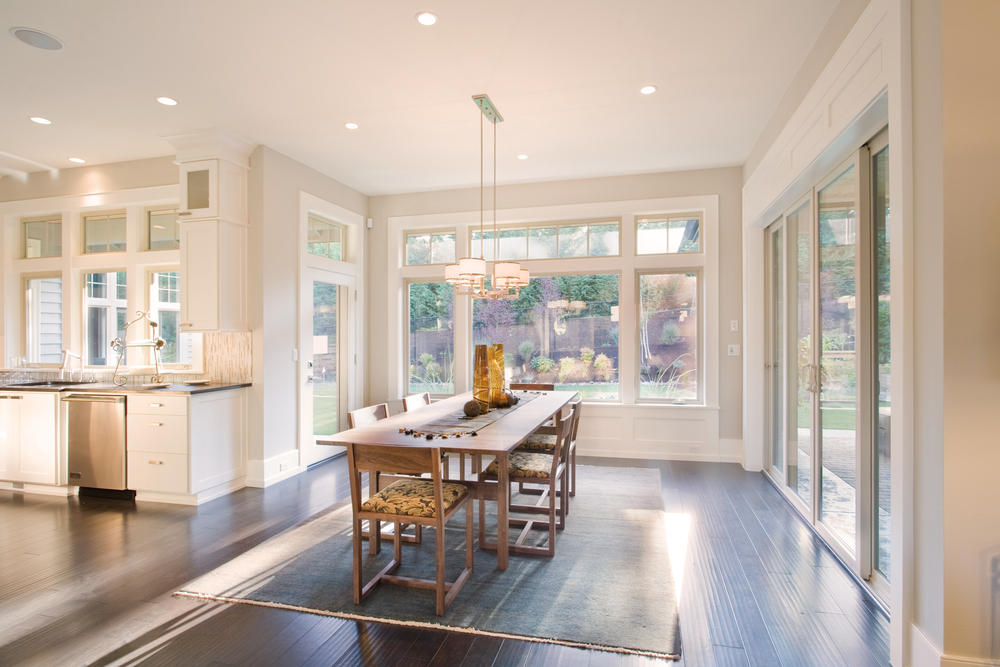
Custom window casings are a small but impactful detail that can significantly enhance the visual appeal of a room. They frame the windows and draw attention to the natural light entering the space while providing a polished, finished appearance. For a traditional look, opt for wide, layered casings with decorative molding. In contrast, modern homes benefit from sleek and minimal casings with clean lines. Flat trim profiles painted in a neutral or matching tone can create a seamless appearance. If you want to make a statement, consider painting your window casings a bold color that contrasts with your walls.
Should Interior Doors Match Trim?
The Standard Lumber & Supply experts often get this question from homeowners. The answer largely depends on your design goals and personal style, but here are some factors to consider.
When to Match
Matching your trim and doors creates a seamless, cohesive look that feels unified and polished. This approach works particularly well for homes with traditional, minimalist, or modern design styles.
For example, pairing white doors with white trim offers a clean, timeless aesthetic that works well in any room. Similarly, natural wood doors with matching wood trim can create a warm, classic look full of texture. This strategy is ideal for spaces where you want the focus to remain on other design elements, such as your furniture, artwork, or other wall treatments.
To summarize, matching is best for:
- Traditional or minimalist interiors.
- Spaces that would benefit from simplicity and harmony.
- Rooms with neutral color palettes.
Pro Tip: If you’re using matching trim and doors in a small space, lighter colors like white or soft neutrals can make the room feel larger and more open.
When to Complement
Contrasting trim and doors introduce character, depth, and visual interest to the inside of your home. This approach works beautifully in eclectic, contemporary, or transitional homes that embrace bold design statements.
For example, a dark-stained wood door framed by crisp white trim creates a striking focal point. A black or navy-painted door paired with natural wood or neutral trim offers a chic, modern vibe. These interior trim ideas can help define spaces and draw attention to architectural details like paneling or molding.
To summarize, complementing is best for:
- Homes with eclectic or contemporary design styles.
- Creating visual contrast and highlighting architectural details.
- Adding personality to neutral or monochromatic spaces.
Pro Tip: When using contrasting colors, ensure the tones complement each other rather than clash. For instance, pair warm wood doors with warm-toned trim.
How to Paint Interior Trim Correctly
If you’re considering a DIY project to update your trim, painting is one of the easiest and most affordable ways to refresh your space.
Not sure how to paint interior trim properly? Follow these five steps to achieve a professional-looking finish:
- Clean and Prep: Remove any dirt or dust from the trim with a damp cloth. Use painter’s tape to protect adjacent surfaces like walls and floors.
- Sand and Prime: Lightly sand the surface to remove imperfections. Apply a high-quality primer to ensure smooth, even coverage and proper paint adhesion.
- Choose the Right Paint: Use a durable, semi-gloss or gloss finish specifically designed for trim and molding. These finishes are easy to clean and resistant to scuffs.
- Apply Paint in Thin Coats: To avoid drips and streaks, apply paint in thin layers using a high-quality brush or foam roller. Allow each coat to dry fully before applying the next.
- Inspect the Final Result: Once the paint dries, peel off the painter’s tape carefully and touch up any areas as needed.
When to Consider Trim Replacement
While painting can give your old trim a new life, there are situations where replacing trim might be the better option. Here’s when you should consider swapping out old for new:
- Extensive Damage: If your trim is cracked, warped, or significantly damaged, it may be beyond repair. Replacing it ensures you maintain both the integrity and appearance of your home.
- Outdated Style: Styles evolve over time, and what looked great 15 years ago might feel dated today. If your interior design has undergone a style refresh, upgrading your trim can help match the updated aesthetic.
- Time-Intensive Projects: Painting all the trim in your home can be quite time-consuming. Sometimes, replacing trim with pre-finished options can save time while delivering beautiful results.
When replacing trim, quality materials are essential. At Standard Supply & Lumber, we offer a wide selection of premium products from trusted brands, including Arauco. The company’s high-performing trim and millwork are both beautiful and exceptionally durable, ensuring a lasting and worthwhile investment in your home.
Implement Your Interior Trim Ideas with Premium Products
Interior trim can be a game-changer for your home design. Standard Supply & Lumber has everything you need to make your interior trim ideas a reality. Reach out to our team today to explore our collection and request a quote. We’re ready to help you create a home you’ll love for years to come.
